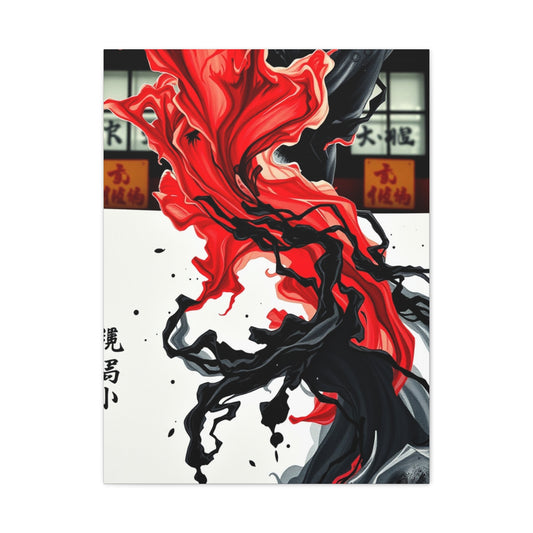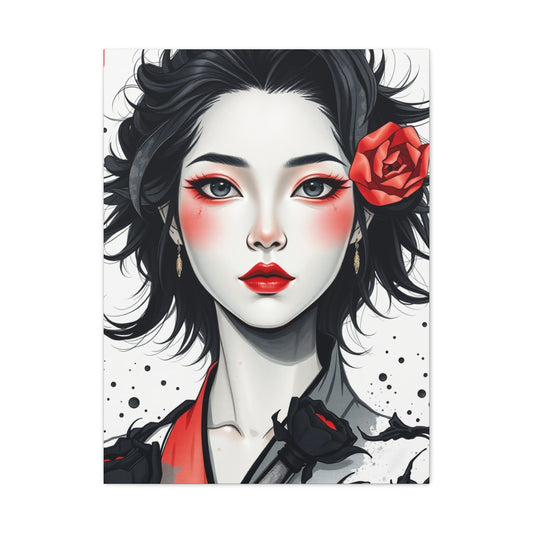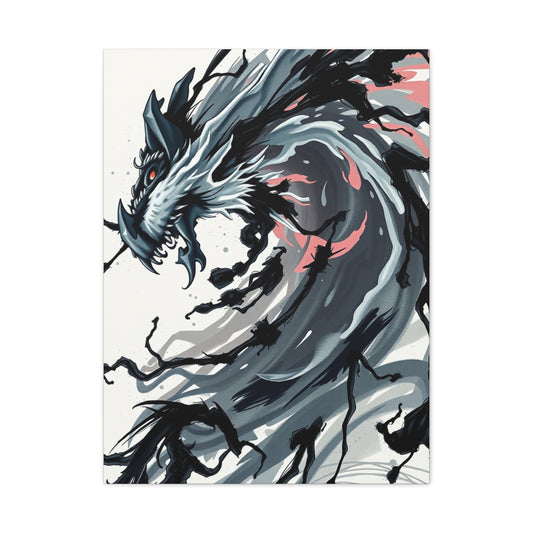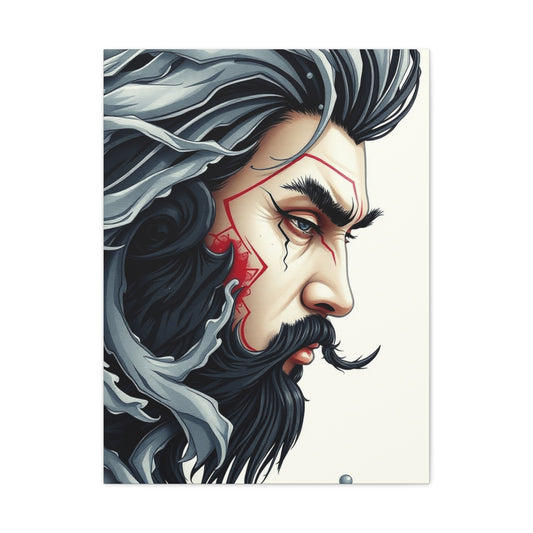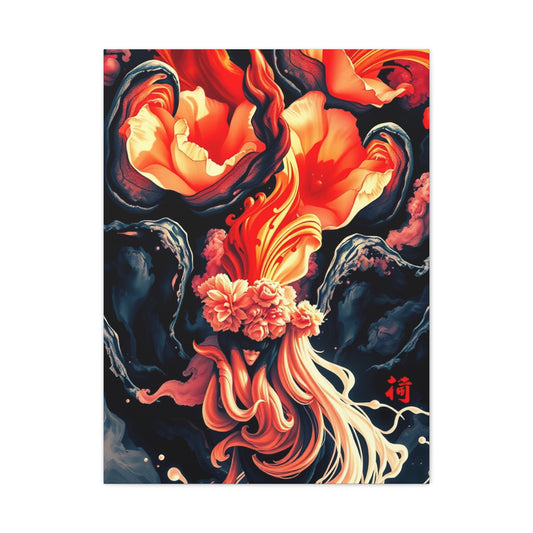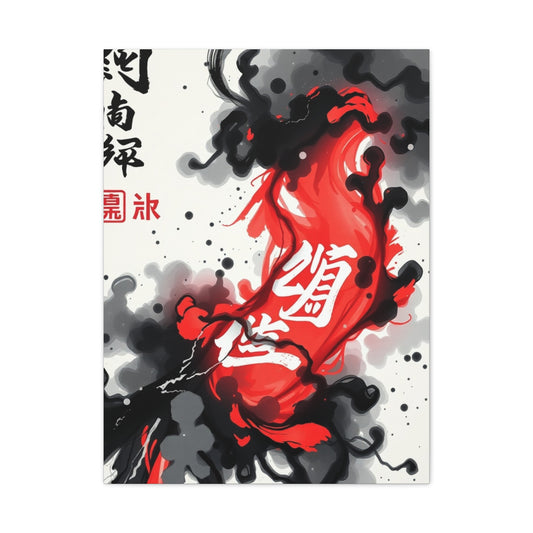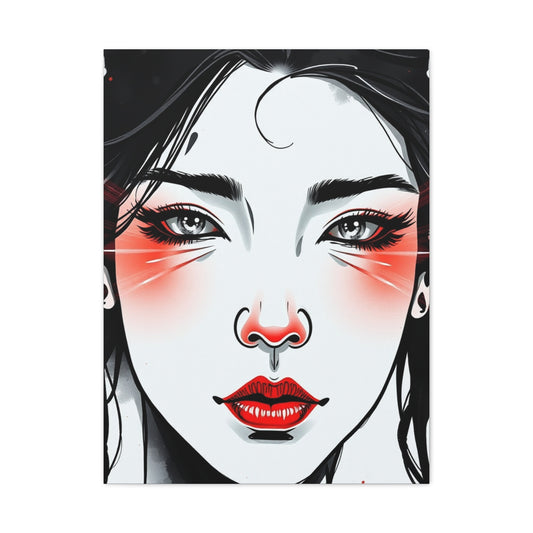Elevate Your Space with Dynamic Ink Wall Art and Fluid Expressions
In recent years, the world of interior design has witnessed a remarkable resurgence in the appreciation of fluid ink canvas prints, reflecting a broader shift toward sophisticated artistic expressions that merge traditional techniques with contemporary aesthetics. Unlike rigid, structured art forms, fluid ink art embraces spontaneity, movement, and organic forms. Artists working in this medium allow pigments to flow, blend, and interact in unpredictable ways, resulting in compositions that feel alive and ever-changing. The resulting canvases capture the essence of creativity itself, making them perfect focal points for modern living spaces, offices, or commercial interiors seeking a balance between elegance and dynamism.
One of the defining characteristics of fluid ink art is its emphasis on motion and expression. The flowing lines, swirling shapes, and layered textures create a sense of depth and energy that draws the viewer in. Each piece tells a unique story, shaped by the interplay of color, gravity, and technique, ensuring that no two artworks are ever identical. This uniqueness allows homeowners and interior designers to infuse their spaces with personality, offering a bold departure from conventional wall décor. Whether executed in vibrant hues or subtle monochromatic tones, fluid ink canvases have the power to evoke emotion, stimulate conversation, and inspire imagination.
Fluid ink wall art also demonstrates remarkable versatility in terms of design styles and interior applications. Large-scale canvases can serve as dramatic statement pieces above sofas, headboards, or in office lobbies, commanding attention and creating a visually immersive experience. Smaller prints, in contrast, can be incorporated into gallery walls or accent arrangements, providing textural contrast alongside minimalist or geometric décor. The adaptability of fluid ink art makes it suitable for a wide range of interior themes, from modern and contemporary to eclectic and bohemian, bridging the gap between classic artistic traditions and current design trends.
The Rise of Fluid Ink Art in Contemporary Décor
In recent years, fluid ink art, also known as liquid ink painting, pour painting, or fluid art, has experienced a remarkable surge in popularity among interior designers, art collectors, and homeowners alike. This contemporary art form is celebrated for its ability to capture the inherent unpredictability of the creative process, offering a refreshing alternative to traditional painting methods that prioritize precision and meticulous planning. Instead of adhering to strict brushstrokes or rigid compositions, fluid ink techniques allow pigments to flow, merge, and interact freely on the canvas, creating organic patterns, mesmerizing swirls, and intricate textures that are impossible to replicate exactly. Each artwork emerges as a one-of-a-kind creation, imbued with personality and spontaneity, which is precisely what makes fluid ink art so appealing in modern décor settings.
One of the most compelling aspects of fluid ink art is its versatility in style and expression. Artists can manipulate inks to produce anything from bold, vibrant compositions with high-contrast colors to subtle, ethereal designs in muted tones. The medium’s fluidity allows for natural gradients, color blending, and layering effects, resulting in a dynamic visual depth that captivates the viewer. Whether presented as a large statement canvas or a series of smaller coordinated prints, fluid ink art has the power to transform ordinary walls into focal points of modern living spaces. Its abstract nature makes it particularly compatible with eclectic, minimalist, and contemporary interiors, where the artwork serves as both a visual anchor and a conversation starter.
The techniques used in fluid ink art contribute greatly to its uniqueness and appeal. Artists often employ methods such as pouring, dripping, marbling, or tilting the canvas to control the flow of ink. Some combine traditional tools like brushes or palette knives with unconventional implements such as blow dryers, straws, or even air compressors to guide the movement of the medium. The interaction between pigments, solvents, and the canvas surface produces unpredictable chemical and physical effects, including cells, streaks, and subtle textures, which lend each piece its individuality. This unpredictability is embraced rather than corrected, celebrating the “happy accidents” that define the medium.
Fluid ink art also offers significant psychological and emotional benefits in interior design. Its flowing patterns and harmonious color combinations can evoke feelings of calm, creativity, and inspiration, making it ideal for living rooms, bedrooms, creative studios, or office spaces. Bright, energetic colors can energize a room and stimulate conversation, while softer, muted palettes promote serenity and mindfulness. As such, fluid ink canvases are not just decorative elements—they actively contribute to the ambiance and emotional tone of a space.
Another reason for the rise of fluid ink art is its accessibility and customization options. Advances in digital printing, high-quality canvas production, and contemporary framing solutions have allowed artists and designers to offer custom pieces tailored to specific room dimensions, color schemes, and stylistic preferences. This flexibility ensures that fluid ink artworks can integrate seamlessly into diverse interior designs, from sleek urban lofts to cozy residential homes. Additionally, the medium’s adaptability encourages layering and pairing with other art forms, such as photography, metalwork, or geometric wall décor, enhancing the room’s visual depth and sophistication.
Why Choose Fluid Expression Art for Your Home
Fluid expression art, often created using fluid inks or acrylic pours, has emerged as a popular choice for contemporary interior design. Unlike traditional forms of art that rely on rigid lines and predefined structures, fluid expression art thrives on spontaneity, movement, and unpredictability. These canvases are not only visually striking but also offer a range of functional and emotional benefits that make them a highly desirable addition to any home. From enhancing aesthetic appeal to influencing mood, fluid ink art can transform ordinary spaces into dynamic, engaging environments.
Visual Depth and Movement
One of the most compelling aspects of fluid expression art is its ability to create the illusion of motion on a static surface. Swirling patterns, gradients, and flowing forms give the artwork a sense of depth, almost as if the colors are alive and in constant movement. This dynamic quality allows fluid ink canvases to act as natural focal points within a room. A large, swirling composition placed in a living room, for example, can draw the eye immediately, serving as a conversation starter during gatherings. In hallways or transitional spaces, these pieces can break the monotony of plain walls, introducing energy and visual interest.
Versatility Across Spaces
Another major advantage of fluid expression art is its remarkable adaptability. Because fluid ink art comes in an almost infinite range of colors, patterns, and intensities, it can complement virtually any interior design style. Monochromatic pieces in soft shades of gray, beige, or black-and-white are ideal for minimalist bedrooms or modern living spaces, providing subtle visual texture without overwhelming the décor. On the other end of the spectrum, bold, multi-hued canvases can energize creative workspaces, art studios, or entertainment areas, infusing the environment with vibrancy and inspiration.
Emotional Resonance
Beyond visual appeal, fluid expression art carries significant emotional and psychological benefits. The organic, unpredictable forms created by the flow of ink or paint can evoke introspection, calmness, or inspiration, depending on the colors and composition chosen. Soft, flowing blues and greens can create a tranquil, meditative atmosphere, making them perfect for bedrooms, meditation areas, or reading nooks. Conversely, warm tones such as reds, oranges, and golds can generate excitement and energy, making them suitable for creative spaces, dining areas, or living rooms designed for social interaction. The unpredictability inherent in fluid art also encourages the viewer to engage with the piece actively, noticing new details, forms, and color interactions each time they observe it.
Additional Considerations
Fluid expression art also offers practical benefits. Many fluid ink canvases are created with durable, high-quality pigments that resist fading over time, ensuring longevity in both sunlit and indoor spaces. Additionally, these artworks often require minimal maintenance—occasional dusting is sufficient to keep the piece looking fresh. Their abstract nature means they can complement evolving tastes, making them a smart long-term investment for interior decoration.
Selecting the Perfect Dynamic Ink Canvas
Incorporating fluid ink art into your décor requires thoughtful consideration to ensure that each piece complements your space while enhancing its overall aesthetic. The beauty of fluid ink canvases lies in their versatility, but choosing the right one involves more than simply picking a design you like. Here are key factors to guide your selection:
Color Palette
The color scheme of your artwork plays a crucial role in setting the tone of the room. Bold and vibrant inks can infuse energy into neutral or minimalist spaces, acting as a dynamic focal point that draws the eye and enlivens the atmosphere. Conversely, softer, muted tones work exceptionally well in bedrooms, meditation areas, or reading nooks, where tranquility and calm are desired. Consider how the colors in your fluid ink canvas will interact with existing décor elements such as furniture, rugs, and wall finishes. Harmonizing tones can create a cohesive, polished look, while contrasting colors can produce striking visual interest and make the artwork pop.
Scale and Placement
The size of the canvas and its placement within a room significantly impact its visual effectiveness. Large canvases are ideal for creating bold statement pieces, particularly above sofas, beds, or mantelpieces, where they command attention and define the space. Smaller works, on the other hand, can be grouped into a gallery wall, offering layered texture and rhythm. When planning placement, consider the proportional balance relative to surrounding furniture and architectural elements. A well-sized piece feels integrated rather than overwhelming or lost on the wall.
Framing and Presentation
The presentation of your ink canvas affects both style and perception. Frameless canvases often emphasize modernity and the fluidity of the ink itself, allowing the artwork to feel open and contemporary. Traditional frames, however, can provide structure, grounding the piece and giving it a refined, classic presence. The choice of material—metallic, wooden, or painted—further defines the mood. Metallic frames can enhance sleek, modern interiors, while wooden frames complement organic, rustic, or bohemian aesthetics. Consider the interplay between the frame and the artwork; the right frame can elevate a piece, while the wrong one may detract from its impact..
Design Philosophy in Ink Art
Minimalist ink drawing prints embody the essential principle that less can indeed be more. These compositions distill artistic expression to its most fundamental elements, eliminating superfluous details to focus attention on pure form, line, and spatial relationships. The resulting artworks possess a clarity and directness that speaks powerfully in our increasingly complex world.
The creation of effective minimalist ink compositions requires extraordinary discipline and refined aesthetic judgment. Every mark must serve a purpose, every space must contribute to the overall composition's success. This economy of means challenges artists to communicate maximum impact through minimal intervention, resulting in pieces that resonate with profound simplicity.
The psychological benefits of minimalist artistic expressions align perfectly with contemporary lifestyle trends toward simplification and mindfulness. These artworks create visual breathing space, offering respite from the sensory overload that characterizes modern urban existence. Their presence in living and working environments promotes mental clarity and emotional equilibrium.
Installation considerations for minimalist ink pieces require careful attention to surrounding elements. The spare nature of these compositions makes them particularly sensitive to environmental factors such as lighting, wall color, and adjacent decorative elements. Proper presentation enhances their contemplative qualities while inappropriate settings can diminish their intended impact.
Exploring Different Fluid Ink Techniques
Fluid ink art encompasses a variety of techniques, each offering unique textures, colors, and visual effects. Acrylic pouring involves mixing acrylic paints with pouring mediums to create smooth, flowing surfaces. Artists pour or tilt the canvas to manipulate the pigments, producing intricate, organic patterns. In contrast, alcohol inks are highly pigmented and vibrant, often applied to non-porous surfaces like Yupo paper or tiles, yielding bright, saturated, and often translucent effects.
Resin-based fluid art adds depth and gloss, enhancing color vibrancy and creating a reflective, almost three-dimensional quality. Resin can be combined with pigments, metallic powders, or glitters to produce dynamic surfaces that capture and manipulate light. Eastern influences, such as Sumi-e, prioritize brush control, fluidity, and expressive motion, emphasizing negative space and minimalism.
For more experimental approaches, metallic and pearlescent inks can be added to any medium to create shimmer and reflective highlights. These effects enhance depth, contrast, and luminosity, making artworks visually striking under different lighting conditions. Understanding these techniques allows collectors and designers to choose pieces that align with their aesthetic vision and spatial needs, ensuring that fluid ink art not only decorates but transforms the atmosphere of a room.
Integrating Fluid Ink Art into Various Spaces
Fluid ink art is highly versatile, capable of transforming virtually any environment. In residential interiors, large canvases serve as focal points in living rooms, energizing neutral spaces with vibrant patterns. Bedrooms benefit from softer, muted palettes, creating serene environments conducive to rest and relaxation. Kitchens or dining areas can incorporate medium-sized pieces, balancing color and flow to enliven the space without overpowering it.
In workspaces, fluid ink art stimulates creativity and mental engagement. Bold, abstract compositions encourage innovation in offices, studios, or coworking areas, while subtle gradients support focus and clarity. Fluid ink installations in hospitality settings—such as hotels, restaurants, and galleries—signal sophistication and modernity, impressing visitors with visual dynamism.
Even outdoor or semi-outdoor applications are possible. Specially treated canvases or resin-coated panels can withstand sunlight and moisture, turning patios, sunrooms, and terraces into immersive artistic environments. Proper placement, lighting, and color selection ensure that fluid ink art enhances functionality, aesthetics, and mood across diverse spaces.
Combining Fluid Ink Art with Other Décor
Fluid ink art is renowned for its adaptability, making it an exceptional choice for blending seamlessly with a wide range of interior décor elements. Its organic patterns, flowing gradients, and unpredictable textures offer a unique visual language that can be echoed, complemented, or contrasted with other components in a room to create a harmonious and immersive environment. One of the simplest ways to integrate fluid ink art is through textiles. Cushions, rugs, curtains, and throws provide an opportunity to echo the colors, tonal variations, or even the movement seen in a fluid ink painting. For example, a canvas dominated by shades of deep teal, rich amber, and gold flecks can be paired with coordinating pillows or a subtly patterned rug to reinforce visual continuity.
Beyond textiles, fluid ink art can harmonize beautifully with three-dimensional décor elements, including sculptures, lighting, and furniture. Sculptures crafted from metal, glass, or resin can interact with the light and reflections within a room, enhancing the layered textures of the painting itself. Imagine a fluid ink canvas with metallic accents placed near a brushed brass sculpture; as natural or artificial light catches both surfaces, the painting and the sculpture appear to converse visually, adding a sense of movement and dynamism. Lighting also plays a critical role. Strategic placement of wall-mounted lights or table lamps can illuminate the intricate swirls and gradients in the ink, highlighting depth and vibrancy while creating shifting shadows that enrich the spatial experience.
Layering fluid ink art alongside other wall treatments, such as murals, wallpaper, or textured wall panels, provides another exciting design avenue. The abstract, flowing nature of fluid ink works particularly well against patterned or geometric surfaces. For instance, a muted pastel fluid ink painting can soften the rigidity of a geometric wallpaper, while a bold, high-contrast ink canvas can punctuate a subtle textured wall, creating focal points that draw the eye. Designers often leverage this interplay to introduce depth and complexity into a room, making the walls feel like a curated art environment rather than a simple backdrop.
Fluid ink art also offers remarkable flexibility when it comes to style fusion. In contemporary interiors, its abstract forms can complement clean, modern lines, while in eclectic or bohemian spaces, the same pieces can harmonize with layered patterns, varied textures, and vibrant color schemes. Even in traditional or transitional designs, fluid ink art can introduce a fresh, unexpected element that injects vitality and movement into otherwise static spaces. The key is thoughtful pairing: by considering color palettes, scale, and texture relationships, homeowners and designers can create compositions that feel intentional, immersive, and visually stimulating.
Ultimately, integrating fluid ink art into a décor scheme is more than simply hanging a painting; it is about creating a dialogue between the artwork and its surroundings. Whether through complementary textiles, interactive sculptures, tailored lighting, furniture placement, or wall treatments, fluid ink canvases provide endless opportunities to elevate a room from ordinary to extraordinary. Each piece can become a centerpiece, a subtle accent, or a dynamic partner to other décor elements, transforming walls into living, evolving expressions of creativity and taste.
Creating a Fluid Ink Art Gallery Wall
A gallery wall composed of fluid ink canvases offers a dynamic way to transform any interior, whether in a home, office, or creative studio. Unlike static, traditional artwork, fluid ink pieces capture movement, depth, and unpredictability, making each canvas an expression of energy and emotion. When curated thoughtfully, a collection of these works can tell a cohesive visual story, turning a simple wall into an immersive artistic experience.
The first step in designing a fluid ink gallery wall is selecting a cohesive theme. This theme could be based on color, texture, or stylistic approach. For instance, a series dominated by shades of blue and teal can evoke a calming, aquatic atmosphere, while fiery reds, oranges, and yellows inject warmth and vibrancy into the space. Alternatively, one might focus on texture or technique, choosing pieces that showcase metallic inks, marbling effects, or layered transparencies. Even if individual canvases differ in size or composition, maintaining a unifying theme ensures that the gallery feels deliberate and harmonious rather than chaotic.
Balance and arrangement are critical to a successful gallery wall. Mixing large and small canvases creates visual rhythm and prevents monotony. A single large statement piece can act as an anchor, immediately drawing attention, while smaller canvases placed around it can lead the viewer’s eye throughout the display. For added interest, consider grouping smaller pieces into clusters or grids, which can emphasize contrast and highlight subtle details in each work. The choice between framed and frameless canvases also affects the gallery’s tone: frameless canvases convey modern minimalism and let the artwork breathe, while elegant frames add structure, refinement, and a sense of formality.
Spacing between canvases is equally important. Proper spacing provides visual breathing room, allowing each piece to stand out while maintaining cohesion. Too close together, and the wall can feel cluttered or overwhelming; too far apart, and the collection may appear disjointed. A common rule of thumb is to keep between two and four inches of space between pieces, adjusting based on wall size and the number of artworks.
A fluid ink gallery wall also provides an opportunity for personal storytelling. Each canvas can represent a mood, emotion, season, or abstract concept, creating a narrative journey as viewers move along the wall. For example, a sequence of ink pieces progressing from light pastel washes to darker, richer tones can symbolize the transition from dawn to dusk or a journey from calm to intensity. Incorporating personal touches, such as a commissioned artwork inspired by meaningful experiences, adds layers of depth and individuality to the display.
Lighting Strategies for Ink Canvases
Lighting plays a pivotal role in how fluid ink art is perceived, often transforming a simple piece into a striking focal point within a room. Unlike traditional paintings, fluid ink canvases possess a dynamic quality due to their swirling patterns, layered textures, and vibrant color gradients. Without appropriate lighting, these subtleties can be lost, and the artwork may appear flat or muted. Thoughtful illumination, therefore, is essential to fully showcase the movement, depth, and tonal variations inherent in each piece.
Natural light offers a unique advantage for displaying ink canvases because it reveals the artwork’s true color spectrum. During daylight hours, subtle gradients and layered tones become more apparent, giving the impression of movement as the intensity and angle of sunlight change. Morning sunlight, with its soft and warm glow, can accentuate the richness of warmer ink tones, such as reds, golds, and amber hues, making them feel more vibrant and inviting. Conversely, midday or overcast natural light can soften bright colors, allowing deeper tones and textures to emerge, enhancing the perception of depth in the artwork. Positioning a canvas near a window or a space with ample natural light is ideal; however, care should be taken to avoid direct sunlight for prolonged periods, as this can lead to fading or damage to delicate inks.
Artificial lighting provides control and flexibility that natural light cannot always offer. Track lights, wall-mounted spotlights, and adjustable floor lamps can be strategically positioned to highlight specific areas of a fluid ink canvas. By angling the lights, reflective or metallic pigments within the inks catch the beam, creating shimmering highlights and subtle shadow effects that amplify the sense of movement. This technique is particularly effective for canvases incorporating pearlescent, iridescent, or resin-based finishes, which interact beautifully with directional lighting. Adjustable lighting allows viewers to experience the artwork differently at various times, creating an evolving visual experience that mirrors the inherent fluidity of the piece.
Caring for Your Fluid Ink Art
Proper care ensures that fluid ink art maintains its vibrancy, texture, and overall impact over time. The first consideration is light exposure. Direct sunlight can fade pigments and alter colors, so positioning canvases away from windows or using UV-protective coatings is recommended.
Regular dusting and cleaning is essential, especially for textured or mixed-media pieces. Use a soft, dry cloth or a gentle brush to remove dust without disturbing the ink layers. Avoid harsh chemicals, as they can damage pigments, metallic foils, or resin surfaces.
Maintaining stable humidity and temperature is critical. Excess moisture can warp canvases, promote mold growth, or affect ink flow in resin-coated pieces, while extreme dryness may cause cracking. If possible, keep artworks in environments with consistent indoor conditions.
Finally, handling should be minimal and careful. Textured or layered fluid ink canvases can be delicate; touching the surface directly may damage the finish. For maximum longevity, consider professional framing with protective glass or acrylic coverings. By following these precautions, homeowners can preserve both the visual beauty and structural integrity of their fluid ink pieces, ensuring they remain captivating for years to come.
The Science of Ink Flow
Understanding the science behind fluid ink art reveals why each piece is so dynamic and unique. Factors such as viscosity, surface tension, and gravity influence how ink spreads, blends, and forms patterns on the canvas. Higher viscosity inks flow more slowly, allowing detailed layering, while lower viscosity inks move freely, producing organic, unpredictable swirls.
Artists often use additives such as silicone, alcohol, or varnishes to manipulate flow behavior. Silicone creates cells and textures, alcohol disperses pigments for translucent effects, and varnishes adjust surface gloss or movement. Tools like palette knives, droppers, and air blowers further influence the ink’s trajectory, enabling controlled chaos that defines fluid expression.
By mastering these scientific principles, artists can predict outcomes while still embracing spontaneity and improvisation, achieving visually captivating and emotionally resonant compositions that make fluid ink art so compelling in interior design and personal collections.
Seasonal and Mood-Based Ink Art
Fluid ink art can be tailored to reflect seasonal themes or specific moods, making it a versatile tool for interior design. For instance, cool blues and silvers evoke the crisp serenity of winter, while warm oranges and yellows can bring the energy and vibrancy of summer into a room. Spring-inspired palettes may include fresh greens and pastels, conveying renewal and growth, whereas autumnal tones of burnt sienna, gold, and deep reds suggest warmth and comfort.
Mood-based selection focuses on how color and form influence emotions and energy within a space. Gentle, flowing patterns with muted tones create calm, meditative environments, ideal for bedrooms, lounges, or reading nooks. Conversely, bold, high-contrast swirls can energize living areas, kitchens, or workspaces, encouraging engagement and creativity.
By aligning fluid ink art with seasonal or emotional objectives, homeowners can create interiors that adapt psychologically and aesthetically throughout the year. This dynamic approach ensures the artwork resonates not only visually but also emotionally, enhancing the overall experience of the space.
Fluid Ink Art for Small Spaces
Small spaces like apartments, home offices, or compact bedrooms require careful design choices to avoid visual clutter, yet fluid ink art can be a perfect solution. Its abstract, flowing patterns create the illusion of depth and movement, making a room feel larger and more dynamic than its physical dimensions.
Choosing the right scale and color intensity is critical. Smaller canvases or panels work well when placed strategically, such as above desks, shelves, or narrow walls. Light and neutral backgrounds with subtle fluid patterns maintain openness, while bold or high-contrast designs can serve as accent pieces that energize the room without overwhelming it. Multi-panel compositions, like diptychs or triptychs, allow for visual rhythm while preserving proportional balance.
Incorporating small-scale fluid ink art also encourages flexibility in arrangement. Pieces can be rotated or swapped with seasonal designs to refresh the space, and frameless canvases reduce visual bulk, keeping the focus on the flowing patterns themselves. By selecting thoughtful compositions and placement, homeowners can leverage fluid ink art to enhance small spaces with personality, depth, and sophistication.
Layering Mixed Media with Fluid Ink
Combining fluid ink with other media opens endless creative possibilities, transforming simple canvases into multi-sensory experiences. Artists often layer acrylic textures, metallic leaf, or natural elements such as sand, pressed flowers, or fabric into fluid ink compositions, adding dimension and tactile interest.
This technique allows for interaction with light and perspective. Metallic accents shimmer under direct or ambient lighting, while layered textures create shadows and highlights, giving the illusion of movement and depth. Mixed media also allows artists to explore contrasting aesthetics, such as blending organic natural elements with glossy resin coatings, producing visual tension that captivates viewers.
For interior design, mixed-media fluid ink art offers versatility. Such pieces can complement furniture, décor, or architectural elements while serving as conversation starters. The combination of visual complexity and physical texture encourages close inspection, drawing viewers into a more immersive experience. Mastering mixed-media layering ensures that fluid ink art transcends simple decoration, becoming both an artistic statement and an interactive visual journey.
Cultural and Historical Inspirations in Fluid Ink
Fluid ink art draws from a rich tapestry of cultural and historical influences. Traditional Eastern practices, such as Japanese Sumi-e and Chinese brush painting, emphasize fluidity, spontaneity, and expressive motion, often depicting landscapes or abstract symbolism. These techniques prioritize balance, negative space, and minimalism, which remain foundational in modern fluid ink compositions.
Western art movements, particularly abstract expressionism, introduced dripping, pouring, and gestural techniques that revolutionized contemporary painting. Artists like Jackson Pollock and Helen Frankenthaler explored organic movement and color layering, emphasizing emotional expression over precise realism.
Today, contemporary fluid ink artists integrate these historical inspirations with modern innovations, blending Eastern discipline and Western abstraction. This fusion results in works that are dynamic, expressive, and culturally resonant. By understanding these roots, collectors and designers can appreciate the symbolism, technique, and lineage behind each piece, enriching their experience of fluid ink art in modern interiors.
Fluid Ink Art in Commercial and Corporate Design
Fluid ink art is increasingly used in commercial and corporate spaces to enhance brand identity and create engaging environments. Offices, lobbies, coworking spaces, and hospitality areas benefit from dynamic abstract compositions that energize employees, attract clients, and leave lasting impressions.
Choosing fluid ink canvases for corporate spaces involves considering brand colors, spatial scale, and audience perception. Large-scale, bold pieces can act as signature statements in reception areas, reflecting innovation and creativity, while subtler, muted compositions foster focus and calm in workspaces or meeting rooms. The fluidity of patterns symbolizes adaptability, forward-thinking, and continuous growth—values often associated with modern businesses.
Additionally, fluid ink installations can be customized to align with corporate themes, incorporating brand colors, logo motifs, or abstract narratives that reflect company values. In commercial settings, proper lighting, framing, and positioning ensure the artwork not only decorates but also reinforces identity, inspires employees, and enhances client experiences, making fluid ink art a functional and aesthetic asset for professional environments.
Conclusion:
The remarkable renaissance of ink-based wall art in contemporary interior design represents far more than a passing aesthetic trend. It embodies a fundamental human desire for authentic artistic expression that connects us with both historical traditions and immediate creative experiences. Through the exploration of fluid ink canvas prints, black ink splash compositions, abstract brushwork techniques, and minimalist drawing approaches, we discover artworks that speak to multiple levels of human experience simultaneously.
The versatility demonstrated by ink flow wall décor, dynamic illustration techniques, and monochrome expressions proves that this medium possesses extraordinary adaptability to diverse environmental requirements and personal preferences. Whether seeking bold artistic statements or subtle contemplative pieces, ink-based compositions offer solutions that enhance rather than overwhelm their architectural contexts. This flexibility makes them valuable investments for both residential and commercial applications.
The psychological and therapeutic benefits associated with viewing and creating ink-based artworks add significant value beyond mere decorative function. The meditative qualities inherent in observing fluid movements, the stress-reducing effects of monochromatic compositions, and the creative inspiration generated by dynamic gestural expressions all contribute to improved environmental quality and user satisfaction. These benefits justify the investment required for quality ink artworks while supporting personal and professional wellness goals.
The technical sophistication required for creating exceptional ink compositions ensures that quality pieces maintain their value and relevance over time. The combination of traditional artistic skills with contemporary aesthetic sensibilities creates artworks that honor historical traditions while speaking to current experiences. This temporal bridge adds cultural significance and educational value to purely aesthetic appreciation.
The economic factors supporting ink-based art collection include relatively accessible entry points, strong appreciation potential, and broad market appeal. Unlike some contemporary art forms that require specialized knowledge for appreciation, ink compositions communicate directly through universal visual languages that transcend cultural and educational boundaries. This accessibility supports broader art appreciation while maintaining sophisticated artistic standards.
The environmental considerations increasingly important to contemporary consumers favor ink-based artistic practices through sustainable material choices, energy-efficient production methods, and minimal waste generation. These ecological benefits align with contemporary values while maintaining artistic quality and investment value. The integration of environmental responsibility with aesthetic excellence represents evolved artistic practice appropriate for current global circumstances.
The technological integration possibilities for ink-based compositions create exciting opportunities for hybrid artistic experiences that combine traditional qualities with contemporary capabilities. Augmented reality applications, interactive installations, and digital enhancement techniques can expand appreciation and engagement without compromising fundamental artistic integrity. These technological possibilities ensure continued relevance for younger, digitally native audiences while maintaining appeal for traditional art enthusiasts.
The cultural significance of ink-based artistic traditions provides rich historical context and philosophical depth that enhance contemporary appreciation. The connections between Eastern calligraphy, Western abstract expressionism, and contemporary minimalism create cross-cultural dialogues that promote understanding and appreciation across traditional boundaries. These cultural bridges add educational value and intellectual satisfaction to aesthetic pleasure.
The installation and presentation possibilities for ink-based artworks range from intimate personal collections to monumental public installations, demonstrating remarkable scalability and environmental adaptability. Professional presentation techniques can enhance the viewing experience while protecting valuable artistic investments. Understanding proper installation principles ensures optimal appreciation while maintaining long-term value.
The future prospects for ink-based wall art appear exceptionally promising given current design trends, technological developments, and cultural movements. The authentic character, environmental sustainability, therapeutic benefits, and aesthetic versatility of ink compositions position them favorably for continued growth and appreciation. Investment in quality ink artworks represents both immediate environmental enhancement and long-term value appreciation.
In conclusion, the comprehensive exploration of ink-based wall art reveals a mature artistic medium that successfully addresses multiple contemporary needs and preferences. From the dramatic impact of bold fluid compositions to the subtle sophistication of minimalist line drawings, ink artworks offer solutions for diverse aesthetic requirements while providing lasting satisfaction and value. The combination of historical significance, contemporary relevance, therapeutic benefits, and investment potential makes ink-based wall art an excellent choice for discerning collectors and design-conscious consumers seeking authentic artistic enhancement for their environments. The enduring appeal of these compositions ensures their continued significance in contemporary artistic and design practice for years to come.

